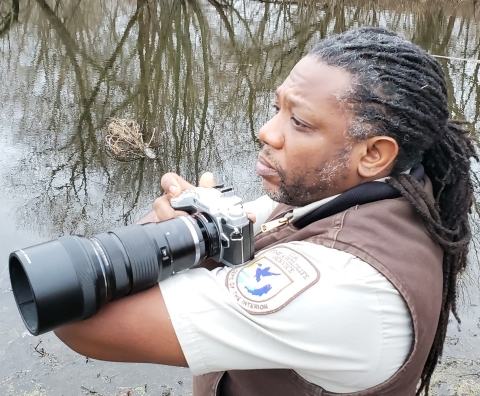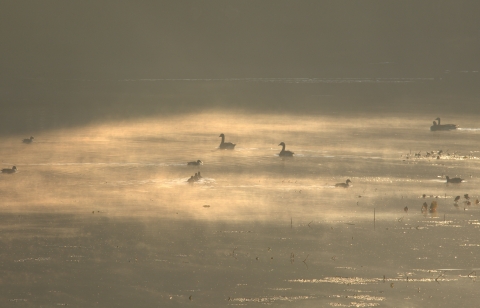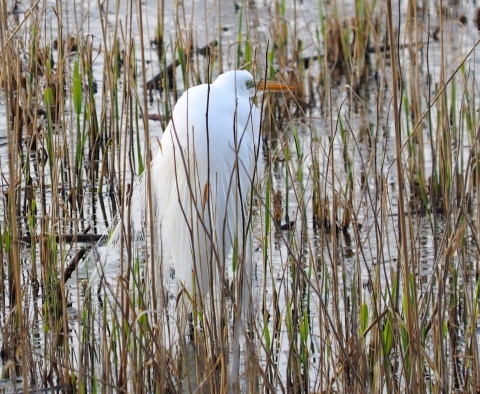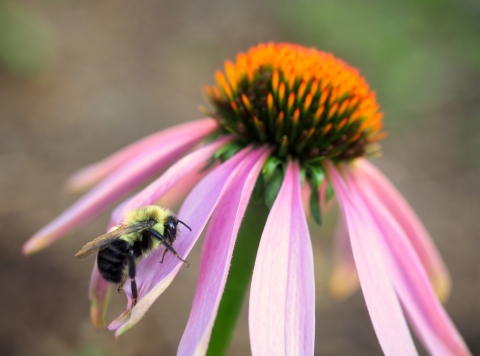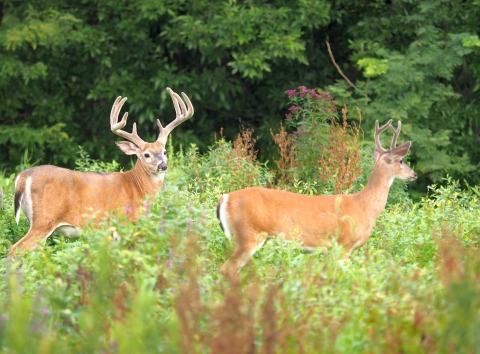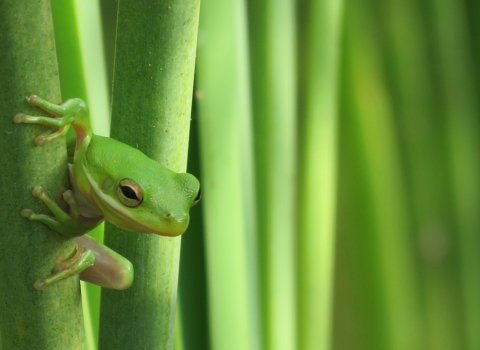Lamar Gore is a man of many hats.
He is manager at America’s first urban refuge, John Heinz National Wildlife Refuge at Tinicum, just across Interstate 95 from Philadelphia International Airport.
He is founder of the Career Discovery Internship Program, a partnership with the Student Conservation Association that introduces culturally and ethnically diverse college freshman and sophomores to careers with the U.S. Fish and Wildlife Service.
He is a photographer extraordinaire.
Of the photo at the top of this page, he says: “Who can resist the sight, design and antics of little ones? Not me! These marsh wren chicks are quite a vision with their tufts of feathers popping out all over the place. They look completely disheveled, and you cannot help but take shots until you’re out of camera memory.”
Gore has taken photos at national wildlife refuges across the country. For this story, we asked him to select some of his favorites from John Heinz National Wildlife Refuge and reflect on how and why he took them. Here they are.
“Lighting makes or breaks a photo. In this scene, the sun is casting perfect beams and shadows in the light fog and on the waterfowl. I'm always looking for the perfect lighting conditions when my camera is in hand.”
“Most winters at the refuge, we get some of the most entertaining visitors to speak of – saw-whet owls. They show up and overwinter with their characteristic behavior of perching relatively low in branches. This particular bird was putting on a preening show, and, in this shot, the bird realized I was intruding on its daily business and began to observe me.”
“A snow-covered winter is my true wonderland. Winter is the most breathtaking time to do photography. There is beauty in the designs made by plants and animals all around us. Then there are the designs created when the wind moves snow to create sweeping lines in a field of white over a frozen wetland.”
“This great egret was simply beautiful. But the broken stems were so much of a distraction, I almost passed on the photo. I finally decided to capture the image, anyway, because the bird's plumes are running along the vertical stems. In the end it created a pleasing photo, particularly with the bird’s eye unhindered by the stems.”
“There's nothing more important than using imagery to show how people choose to engage with the outdoors. This young man came out a couple years ago with his uncle to enjoy the fall colors and waterfowl at the refuge. When out on the refuge, I’m always looking for a photo to tell the outdoor story of our under-reached audiences.”
“I've always been fascinated with the design of coneflower. This bumblebee seemed to decide it needed to share in the appreciation by landing on one of the flower's elongated petals. So I adjusted focus to make the bee the main target of the image. I take many photos of pollinators and pollinator plants for education purposes with our communities near the refuge.”
“Morning scenes often include the ubiquitous white-tailed deer, which feed throughout the refuge. This field presents great opportunities to capture deer with perfect morning lighting and native plants in the background, like the purple-colored ironweed.”
“Winter scenes have a special place in my heart. In this photo, the gnarly snow-covered branches give me structure structure
Something temporarily or permanently constructed, built, or placed; and constructed of natural or manufactured parts including, but not limited to, a building, shed, cabin, porch, bridge, walkway, stair steps, sign, landing, platform, dock, rack, fence, telecommunication device, antennae, fish cleaning table, satellite dish/mount, or well head.
Learn more about structure . Close to the center of the scene, the icy waterway gives my eyes an escape route.”
More photoGRAPHY tips Visit a national wildlife refuge


